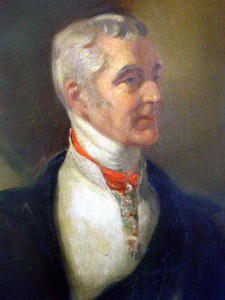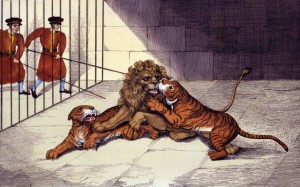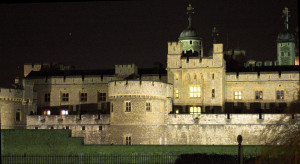 One of the stops on the Duke of Wellington tour (only 3 more weeks and I’ll be in London!) will be the Tower of London. I’m very excited about this because I’ve never visited the Tower of London.
One of the stops on the Duke of Wellington tour (only 3 more weeks and I’ll be in London!) will be the Tower of London. I’m very excited about this because I’ve never visited the Tower of London.
What, you ask, does the Tower have to do with the Duke of Wellington? The duke was Constable of the Tower from 1826 to 1852.
The Constable of the Tower has always been a prestigious one. Although now the role is largely ceremonial, in Wellington’s time the Constable was the man in charge of the Tower, and, typical of Wellington, he set about to make improvements.
 1. He closed the Royal Menagerie.
1. He closed the Royal Menagerie.
The Royal Menagerie had been at the Tower since the early 1200s and had housed all sorts of exotic animals, like ostriches, elephants, lions, tigers, kangaroos, etc. The waste from the animals drained into the moat, creating disease and noxious odors, plus there were some vicious animal attacks, including a fight between a Bengal tiger, tigress and a lion, ending in the lion’s death. The animals were moved to the London Zoo at Regent’s Park.
2. He drained the moat.
The Surgeon General at the time described the moat as ‘impregnated with putrid animal and excrementitious matter… and emitting a most obnoxious smell.’ The moat was blamed for several soldier’s deaths and for cholera outbreaks. The Duke drained the moat and created a dry ditch or fosse that visitors see to this day.
 3. He build the Waterloo Barracks.
3. He build the Waterloo Barracks.
To adapt the Tower for modern warfare and a professional army, he closed the Tower pubs, instead creating an army canteen and an officer’s mess. He built the Waterloo Barracks to house 1,000 soldiers. The Waterloo Barracks is also where the Crown Jewels are kept.
4. He made the awarding of Yeoman Warder to be based on distinguished military service.
Before Wellington’s time as Constable, the post of Yeoman Warder could be purchased for 850 guineas or even inherited within families. The Duke brought these practices to an end.
5. He oversaw the rebuilding of the Tower after the fire of 1841.
After the fire, Wellington strengthened the Tower, making it secure from potential civil unrest.
6. He increased the number of visitors to the Tower.
Under the Duke, tourism at the Tower increased–much to his displeasure. Wellington did not approve of public visiting the Tower. He felt them a nuisance and a threat to security.
The Tower will have a special exhibit of the Duke of Wellington’s influence during his time as Constable of the Tower on the newly opened North Walk. I can’t wait to see it!

I am sooooo envious!!! Bring back lots of great stories 🙂
Very interesting post, Diane! I never knew that Wellington did all that for the Tower. I am also soooooo envious!! Wish we could all fit in your suitcase and go on the tour, too. I’m looking forward to the stories you’ll bring back!
The summer I lived in England, I visited the Tower twice. I didn’t know the role the Duke played, or if I did I unfortunately didn’t appreciate the information at the time. I agree with Amanda and Gail. I’m also excited for you!